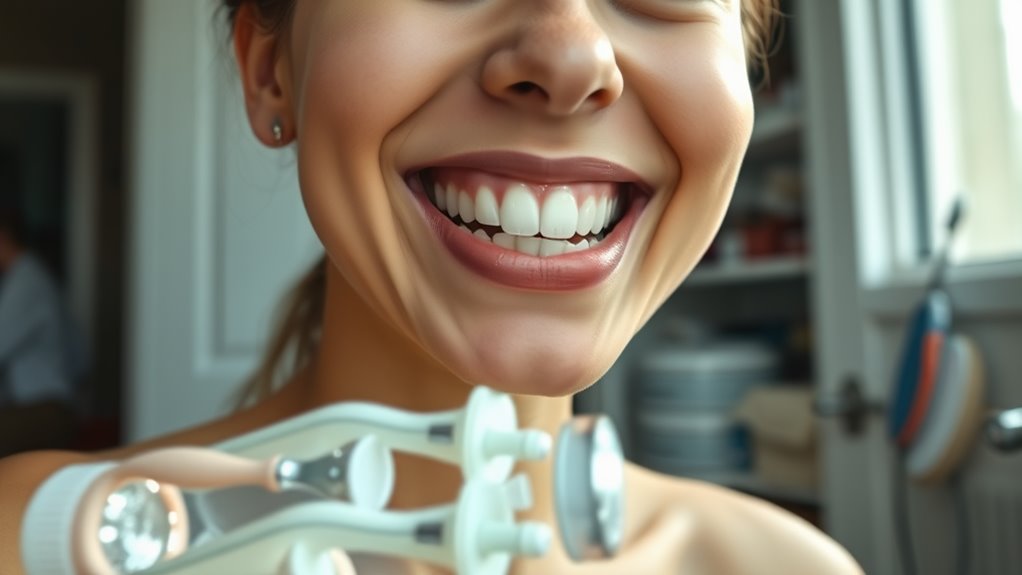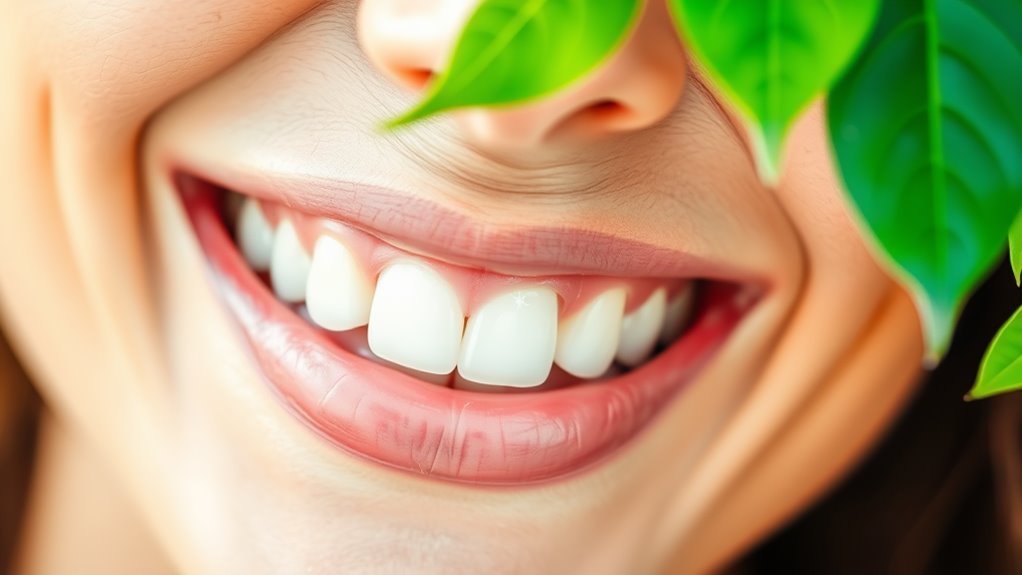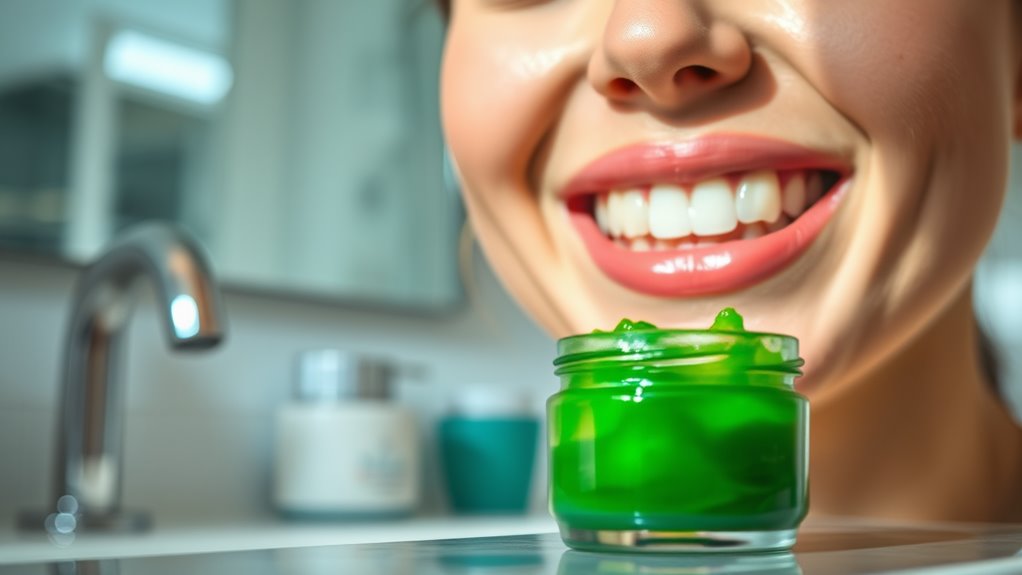The Worst Teeth Whitening Mistake You’re Making Right Now!
The worst teeth whitening mistake you’re making right now is overusing whitening products. This can lead to enamel erosion and increased sensitivity, ultimately harming your smile. Many believe that using these products more often will yield better results, but that’s a myth. Balancing your whitening routine is key. Plus, if you ignore signs of sensitivity or skip dental check-ups, you’re setting yourself up for trouble. Keep exploring to discover smarter whitening strategies for a brighter smile!
Overusing Whitening Products
While it might be tempting to achieve a brighter smile quickly, overusing whitening products can do more harm than good. You may think that the more often you use these products, the whiter your teeth will become, but that’s a common misconception.
Extended use can lead to enamel erosion and increased tooth sensitivity, causing discomfort and compromising your smile. It’s important to remember that a radiant smile is about balance, not just quick fixes.
Instead of overdoing it, consider a regular routine and consult with your dentist for personalized advice. Developing a sustainable teeth whitening plan won’t only protect your enamel but also give you confidence in your beautiful smile, helping you truly belong in every moment.
Ignoring Sensitivity Signs
Have you ever noticed your teeth feel sensitive after whitening treatments? If so, you’re not alone—many people experience this.
It’s essential to listen to those signs because ignoring them can lead to more significant issues down the line. Sensitivity may indicate that your enamel is weakening or that you’re using products too frequently.
Instead of pushing through the discomfort, take a step back and assess your routine. Join others in prioritizing your dental health by allowing your teeth time to recover.
You might even consider alternating between whitening sessions or seeking professional advice to find a gentler approach.
Not Following Instructions
Ignoring sensitivity signs can open the door to other mistakes, like not following instructions for your whitening products.
It might seem tempting to rush through the process or adjust the usage to fit your schedule, but this can lead to disappointing results or even damage. You don’t want that!
To ensure you get the most out of your whitening journey, remember to:
- Read the instructions carefully before starting.
- Stick to the recommended application time without exceeding it.
- Avoid mixing different products unless specified.
- Check for potential interactions with your dental health.
Skipping Dental Check-ups
Although it might be easy to overlook your dental check-ups when you’re focused on whitening your teeth, skipping these appointments can seriously undermine your efforts.
Regular visits to your dentist are crucial for identifying underlying issues that could hinder your whitening journey. They can spot cavities, gum disease, or other concerns that may compromise your shiny smile.
Plus, a professional cleaning helps remove built-up stains that at-home products mightn’t address. Staying on top of your dental health not only boosts your confidence but also ensures you’re creating a solid foundation for your brightening goals.
Relying on DIY Remedies
While it’s tempting to turn to DIY remedies for teeth whitening, relying on them too heavily can lead to more harm than good. You might find yourself excited by the prospect of a brighter smile, but some popular methods can damage your enamel or irritate your gums.
It’s crucial to be cautious! Here are some common DIY whitening methods to reconsider:
- Baking soda and lemon juice combo
- Activated charcoal treatments
- Hydrogen peroxide brushing
- Apple cider vinegar rinses
Instead of risking your dental health, turn to professional options or consult your dentist. They can provide safe and effective solutions tailored to your needs, helping you achieve that beautiful smile without the dangers of DIY shortcuts.
Your teeth deserve the best care!
Disregarding Stain Causes
Understanding the causes of teeth stains is essential if you want to achieve a truly white smile. Ignoring these factors means you’re missing out on a vital step in your whitening journey. Lifestyle choices, diet, and age all play critical roles in how your teeth appear. By recognizing what leads to stains, you can be proactive in preventing them.
| Cause | Common Examples | Preventive Measures |
|---|---|---|
| Foods & Drinks | Coffee, red wine, tea | Rinse after consumption |
| Smoking | Cigarettes | Quit smoking |
| Medications | Tetracycline | Consult your dentist |
| Natural Aging | Enamel thinning | Professional cleanings |
Understanding these causes is a smart way to maintain your desired whiteness long-term.
Underestimating Enamel Damage
Ignoring the impact of enamel damage can sabotage your teeth whitening efforts. When you overly rely on whitening products, you risk harming that essential protective layer.
If enamel gets too thin, your teeth may become more sensitive, and the bright results you want might turn dull or uneven.
Take a moment to consider these points:
- Choose products wisely: Look for gentler formulas.
- Limit usage: Don’t overdo it; moderation is key.
- Consult a professional: A dentist can guide you on safe options.
- Maintain oral hygiene: Regular brushing and flossing help protect enamel.
Your smile deserves the best care, so be mindful of how your choices impact your enamel!
Neglecting Dietary Impacts
Many people don’t realize that what you eat and drink can significantly affect your teeth whitening results. If you’re committed to achieving a brighter smile, you need to be mindful of your dietary choices.
Avoid staining foods and drinks like coffee, red wine, and dark berries right after your whitening treatment; they can cling to your freshly treated teeth and sabotage your hard work. Instead, opt for crunchy fruits and veggies that help clean teeth naturally.
Staying hydrated with water can also flush away any lingering pigments. Remember, it’s not just about what you do during your whitening sessions; it’s about maintaining your results through your everyday choices.
Let your diet support your journey to a dazzling smile—you deserve it!
Misjudging Product Quality
How can you ensure you’re choosing the right teeth whitening product? It’s easy to get overwhelmed by the various options available.
However, misjudging product quality can lead to disappointing results. Start by prioritizing effectiveness and safety, rather than just choosing the cheapest option. Look for products that have a good reputation and read reviews from real users.
Here are some tips to help you choose wisely:
- Check ingredient lists for harmful substances.
- Look for third-party certifications to ensure quality.
- Seek recommendations from friends or family.
- Consult with your dentist for personalized advice.
Investing in a high-quality whitening product can make all the difference in achieving that radiant smile you’ve always wanted.




